The most representative city of Sicilian Baroque is eager to enchant you: let it cast its spell. It's difficult to resist such magic when everything around seems somehow dipped in gold. The effect is due to the material used for the buildings erected after the 1693 earthquake, a local stone in amazing golden and pinkish shades.
Noto is the highest degree of theatricality in south-eastern Sicily. Together with the other late Baroque towns in Val di Noto (Caltagirone, Militello Val di Catania, Catania, Ragusa, Modica, Palazzolo, Scicli), is a UNESCO World Heritage Site since 2002. In this article, you'll find what to do and see in Noto like a local, among art, nature and traditions.

What to do in Noto like a local

The narrow streets around the Agliastrello district, a popular area in the upper part of the city, historically inhabited by artisans and craftsmen, are the other face (picturesque, colourful, sober) of the Baroque opulence permeating Noto.
Entirely rebuilt a few kilometres from the ancient settlement razed to the ground after the 17th-century devastating earthquake, Noto is now a gentle city, as vibrant and hypnotic as the colours painting its mesmerising palazzi and chiese.
To admire its (golden) splendour, start from Corso Vittorio Emanuele, the exquisite entrance door street unrolling like a perfectly staged film or theatre set.
See the authentic face of eastern Sicily's 'stone garden' as you immerse yourself in the most heartfelt local traditions, spend a romantic evening amidst the lights of the centro storico, and discover the secrets beyond the elegant walls of the most beautiful palaces.
Check out our tips for visiting Noto like a local.
Book a tour of Sicily's Baroque towns10. What to do in Noto like a local: spend a romantic evening in Via Nicolaci
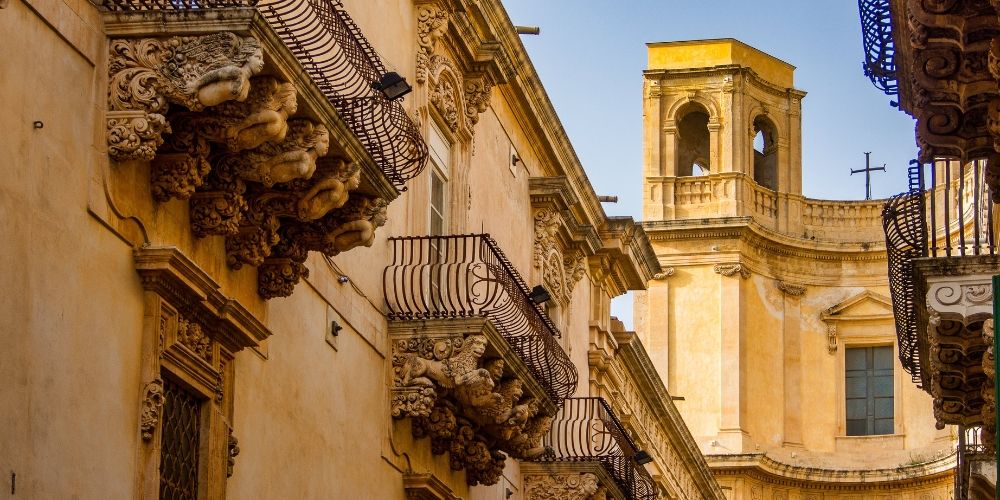
If you're looking for an authentic experience in Noto, why not spend a romantic evening in Via Nicolaci? Take a stroll through this golden street and admire the hidden details on the façades of churches and historic buildings. You might even catch a glimpse of the strange creatures peeping out of inlaid balconies.
Via Nicolaci is a rather narrow sloping street that links the church of San Carlo al Corso to the Chiesa di Montevergine. It's best to appreciate the luxurious palaces and scrutinize all their details during the day, but it's in the evening that this strada exudes a magical magnetism. After sunset, the lights of the clubs turn on, and the restaurant tables dress it up with romance and charm.
However, be aware that you may feel observed due to the opulent balconies of the 18th-century Palazzo Nicolaci. There are seven of them, all populated by different characters: lions, sphinxes, mermaid putti, and winged horses.
Via Nicolaci is also the protagonist of one of the town's most eagerly awaited events. Find more in the next item.
9. Watching the town blossoming
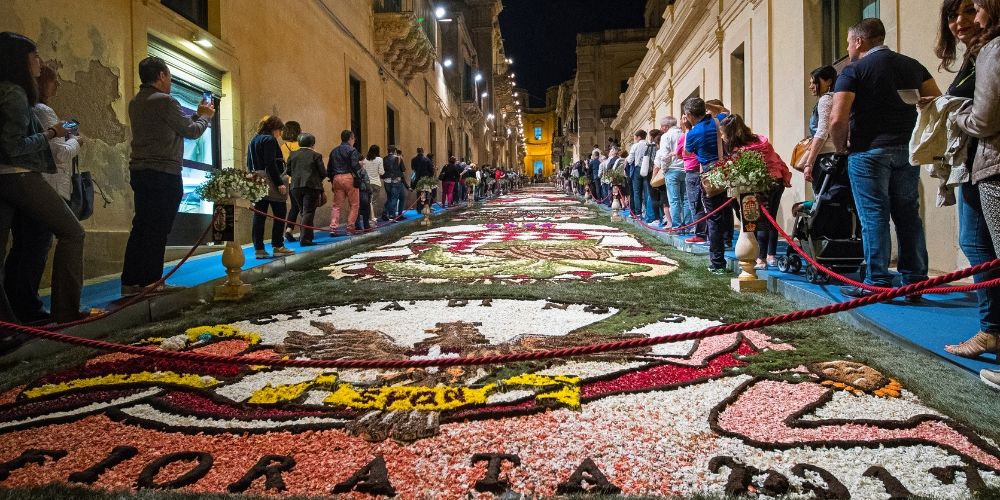
If you're looking for a beautiful, fragrant experience in Noto, then you must be in town during its amazing Infiorata. Every May, hundreds of thousands of colourful petals fill Via Nicolaci, creating a stunning floral carpet with designs and motifs in line with the chosen theme.
Local artists use a variety of flowers, including daisies, roses, carnations, and gerberas, to create a long, multicoloured mosaic.
The Infiorata di Noto is more than just a stunning display - it also features markets, shows, and an exciting costume procession. The celebrations culminate on the third Sunday in May, but you can feel the excitement from Thursday evening when the works begin to take shape.
If you're planning on attending as a non-resident visitor, be aware that there will be a ticket fee of €3.50. You can purchase your ticket online or at an info point in town.
P.S. Did you know that in Italy there are many other events like this? We've gathered the best ones in a single article. Take a look.
8. Attending a folk festival
The feast of San Corrado in Noto is a highly expected event celebrated twice a year in honour of the city's patron saint. Beyond the religious significance, it also attracts tourists captivated by the ancient rituals performed throughout the city streets.
The procession is especially moving as 50 bearers carry a 16th-century silver-plated urn containing the sacred relics on their shoulders while hundreds of decorative candles called cilia light the way. The procession is joined by devotees, some of whom choose to walk barefoot in a tradition called 'viaggio scausu'.
Additionally, every ten years, the urn is carried to the Hermitage of San Corrado, a sanctuary located about 5 km from the centre of Noto.
Participating in this ceremony will give you a truly local insight and make you feel the enthusiasm that envelops the city during these days of folklore and devotion.
7. Watching the city from the ‘gelosie’
As you explore the stunning city of Noto, you'll come across magnificent convents that add to the Baroque charm of the area. During the 18th century, these monasteries played a crucial role in providing shelter for young nobles who were not eligible to inherit their family's estate.
Walking through the streets and squares of Noto, you'll notice some particularly captivating conventi. Their sophisticated walls made of the unique local limestone conceal stories and secrets that are still hidden behind their wrought-iron windows called 'gelosie' (jealousy).
Those entering the cloistered life were once relegated to observe life outside from these very windows.
One of the most sensational buildings is the former convent of the Poor Clares, which is connected to the church of Santa Chiara. This place offers a breathtaking view of the cathedral and the historic centre.
A highly recommended attraction is the Monastero del SS. Salvatore, famously featured in the movie Sparrow by the renowned Italian director Franco Zeffirelli. The film is based on a beloved novel by Sicilian author Giovanni Verga, telling the heart-wrenching tale of a young girl coerced into becoming a nun.
A must-see for anyone interested in cultural and historical landmarks.
6. Taking a trip to a nature reserve and a fishing village
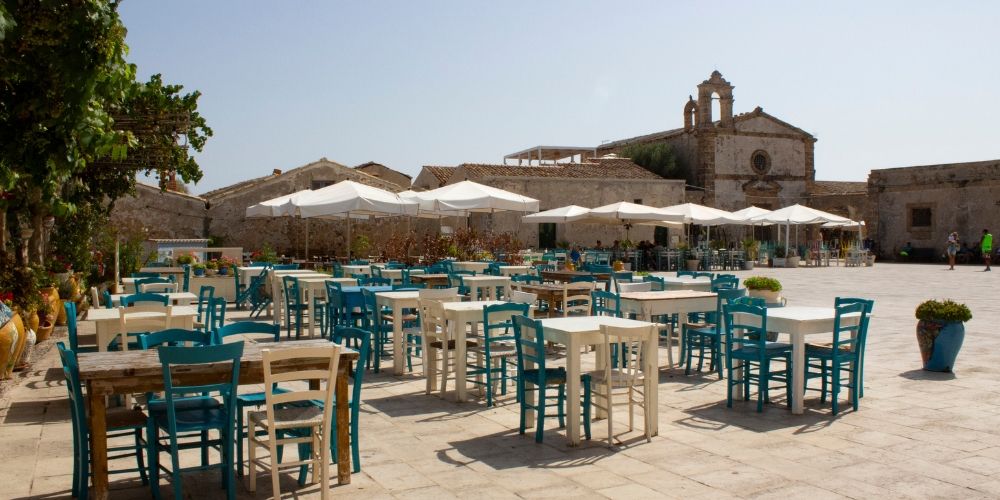
Take a short drive and discover the breathtaking beauty of Vendicari Oriented Nature Reserve Fauna Oasis. Covering an impressive area of 15,000 hectares, the reserve features a diverse range of landscapes, including picturesque coves, salt marshes, dunes, and beaches.
Experience the beauty of nature by taking a stroll or bike ride along the various paths that meander through the lush juniper and mastic trees. Don't forget to keep a lookout for herons, storks, and pink flamingos that call this area home.
If you visit between April and June, you'll have the opportunity to witness over two hundred migratory bird species, making it perfect for birdwatching from the Torre Vendicari beach.
Highlights include a 18th-century tuna fishery ruins, the old salt pans, a 15th-century Saracen tower, and the ancient Greek colony of Eloro.
Cool off with a swim in the clear waters of the reserve before heading to the charming fishing village of Marzamemi. Here, you can spend an unforgettable evening enjoying the lively clubs of Piazza Regina Margherita and the quaint streets surrounding it.
Find something you can do near Noto5. Visiting the Baroque palaces
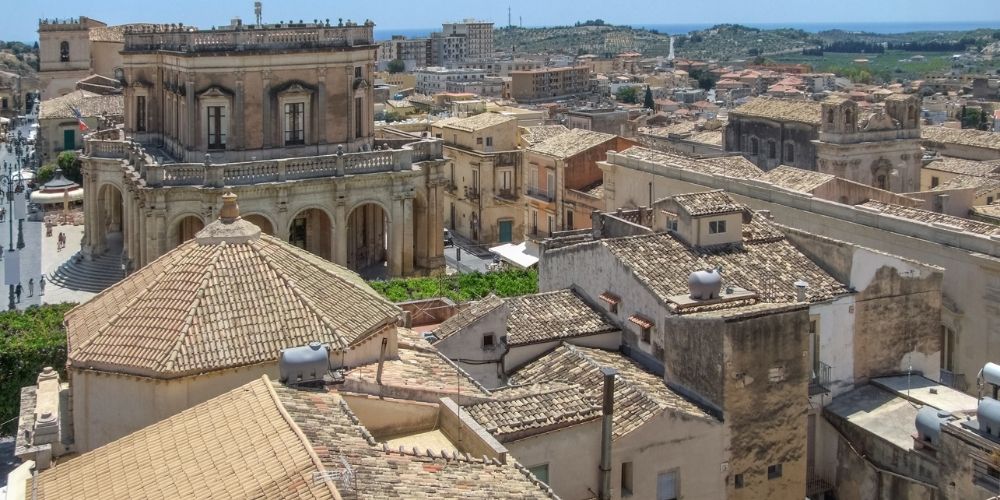
Noto's popularity is attributed to the unique and artistic architectural style that transformed southeastern Sicily after the earthquake. Rosario Gagliardi, along with Vincenzo Sinatra, played a significant role in the imaginative and scenic reconstruction.
As you walk through Porta Reale and along Corso Vittorio Emanuele II, you'll notice the church of San Francesco d'Assisi and the Benedictine Monastery of SS. Salvatore. These are just a preview of the beauty that awaits you at the monumental Cathedral of San Nicolò.
Noto's Baroque heart is enriched by several architectural marvels, including Palazzo Ducezio's hall of mirrors, the stately Bishop's palace, and the stunning churches of San Carlo al Corso and Santa Chiara.
The symmetrical streets and palaces, including the famed Palazzo Nicolaci adorned with masks and grotesque figures, create a breathtaking, theater-like ambience.
However, Noto's true charm lies in its artistic treasures, and the more you delve into this city's rich history, the more you'll appreciate its beauty.
4. Admiring the colours of Piazza del Municipio at sunset
Noto is always beautiful, but it takes on an even more enchanting charm during sunset. The limestone used to construct its stunning buildings gives them a unique light and warm hue, ranging from white to yellow to pink.
The captivating and harmonious chromatic effect accentuates the beauty of architecture and decorations.
The colours of Noto seem to glow and reflect like gold, depending on the sunlight and time of day.
To experience the perfect golden hour, head to the panoramic terrace of the Church of S. Chiara or the Convento delle Clarisse. Alternatively, you can enjoy the warm shades of rose gold on the Cathedral by sitting on the steps of Palazzo Ducezio.
3. Visiting Siracusa
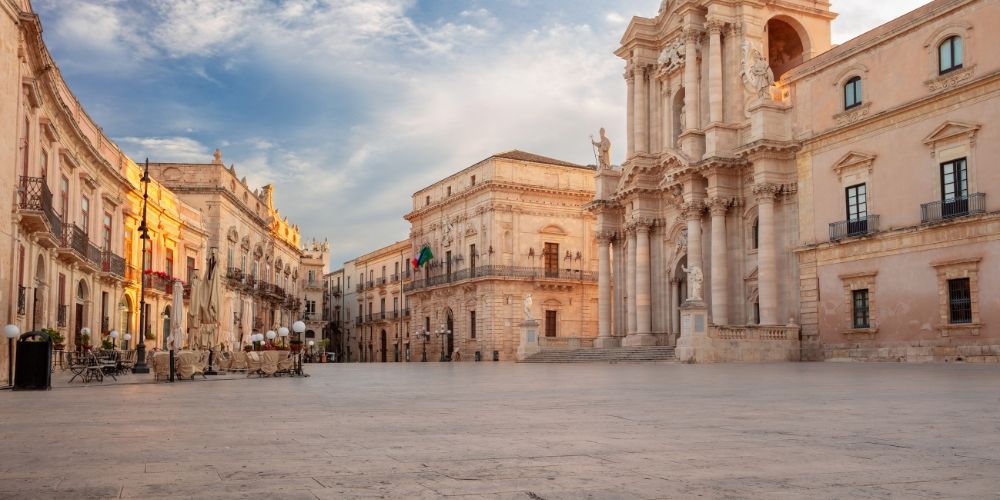
Let's bid farewell to Noto for a while and set sail towards Siracusa.
From the grand historical splendours of Piazza del Duomo, which has been the centre of the city's worldly and spiritual affairs for millennia, we transition to the colours, scents, and flavours of the Ortigia market. Here, the art of selling merges with culinary expertise to form a unique and creative street culture.
Must-sees include La Giudecca, the ancient Jewish quarter preserving little-known gems away from mass tourism; the Catalan Gothic architecture of Piazza Archimede, boasting a beautiful 19th-century fountain dedicated to Artemis, the protector goddess of Siracusa; and the Maniace Castle, built for Frederick II of Swabia in the 13th century.
Want to know more? Check out our local itinerary to discover our insider tips.
Get tickets for Museo Archeologico Siracusa2. Attending an exhibition
Until November 3rd, 2024, Convitto delle Arti in Noto is hosting the exhibition La Sicilia di Caravaggio, an artistic journey through Caravaggism and the relationship between the island and Michelangelo Merisi, who spent a year in Sicily between 1608 and 1609.
The exhibit showcases twenty-nine works by twenty artists active in the region during the 17th century, along with 'St. John the Baptist at the Fountain' from the National Museum of Art Heritage in Malta, a painting attributed to Caravaggio.
One of the most intriguing pieces is Paolo Geraci's prized reproduction of the Nativity stolen in Palermo in 1969.
The exhibition is complemented by the Caravaggio Experience, an immersive multimedia space allowing visitors to virtually step into the Maestro's greatest masterpieces.
1. A treat for tv series fans
Even if you haven't caught the second season of the HBO cult hit The White Lotus, chances are you've heard about it, so you'll probably know it was filmed in Sicily.
Noto hosts one of the most stunning settings of the show—Quentin's (Tom Hollander) house, that luxurious abode that leaves Tanya (Jennifer Coolidge) completely awestruck.
It's not a set explicitly created for filming, but it's actually a real place called Villa Elena. French architect and designer Jacques Garcia built this neoclassical gem on the remains of an ancient Jesuit monastery. This convent, in turn, was built on a Norman edifice site that once housed a Greek villa dating back to the 3rd century BC.
The princely mansion pays homage to the splendour and opulence of aristocratic and sensual Sicily. Stuccos, frescoes, majolica tiles, delicate fabrics, dramatic colonnades, ancient marble, antique furniture—everything has been meticulously crafted to create an environment that seems to have existed for centuries.
Our wealthier readers can dream on: you can actually rent the place out and live like kings and queens for a while.
About the author
Written on 11/04/2024
We recommend


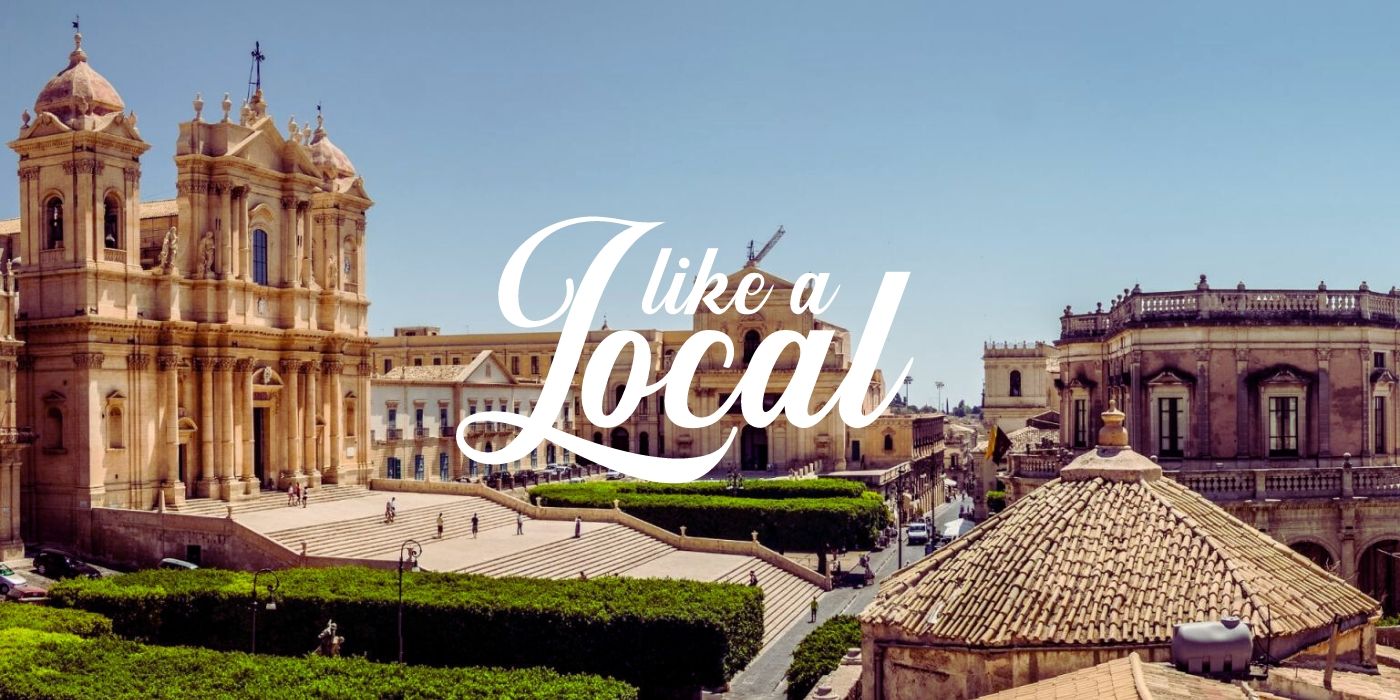
Lorena Calise
A journey through art, nature and traditions in Sicily's most representative Baroque city. Discover what to do in Noto like a local.